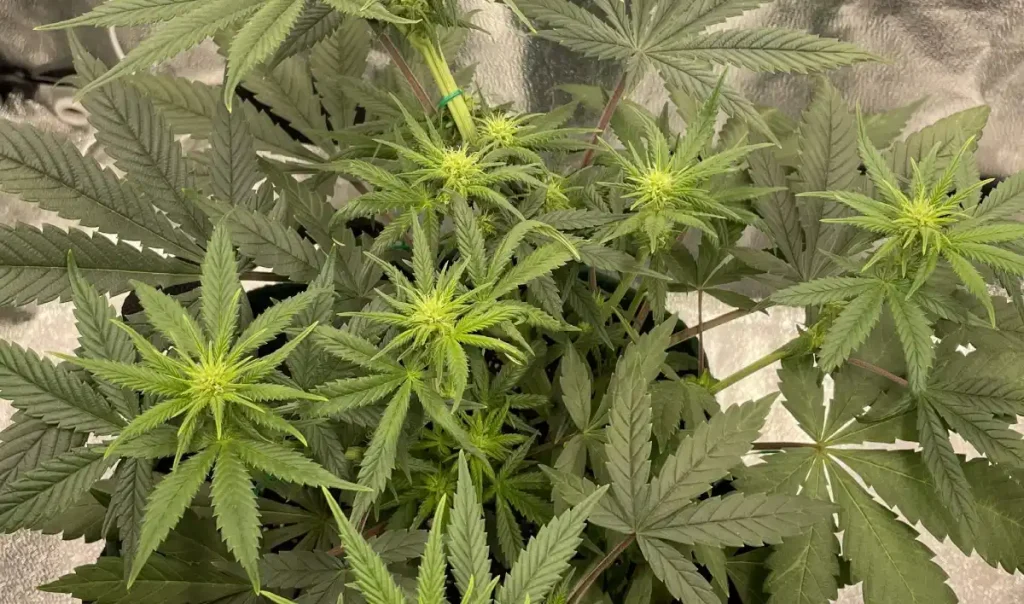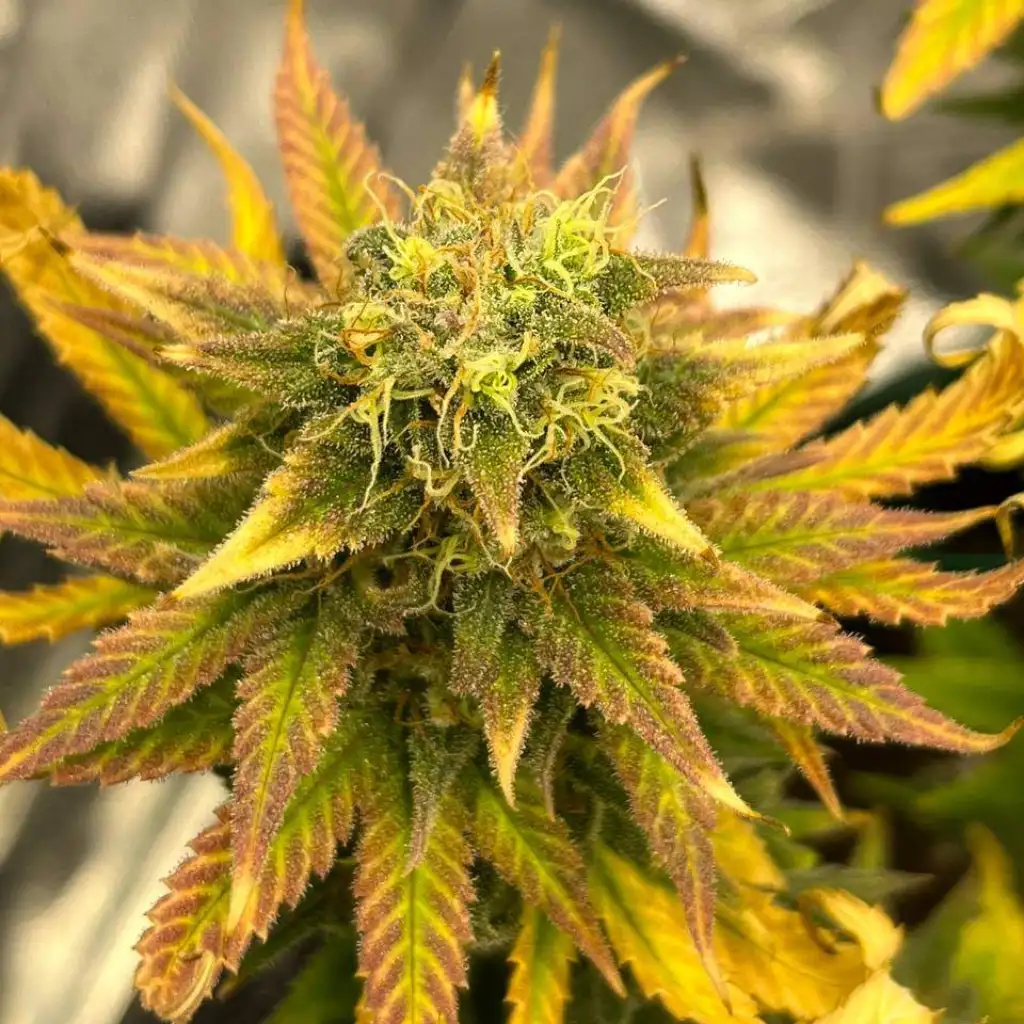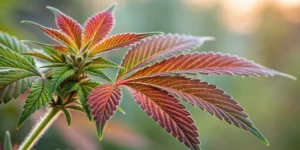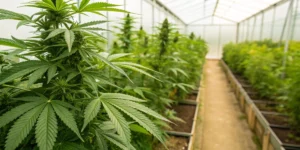The Lost Pearl strain is gaining widespread acclaim among cannabis enthusiasts and cultivators for its unparalleled flavor, balanced effects, and impressive growth potential. Whether you’re curious about its origins, cultivation techniques, or standout characteristics, this guide will provide everything you need to know to successfully grow and enjoy Lost Pearl.
Lost Pearl: Exceptional Genetics and Effects
Origins and Genetics
Lost Pearl is a sativa-dominant hybrid with genetics tracing back to strains celebrated for their vibrant flavors and energizing effects. While its exact parentage can vary depending on the breeder, this strain is universally recognized for delivering fruity, tropical notes reminiscent of sweet pineapple and tart berries. These traits, combined with its sativa-leaning effects, make it a favorite among growers and consumers alike.
The genetic design of Lost Pearl ensures adaptability, allowing it to thrive in various cultivation environments. This resilience, paired with its robust growth habits, makes it an excellent choice for cultivators seeking a reliable and flavorful strain. Additionally, its genetic stability offers consistent yields and high terpene production, ensuring a premium crop with every grow cycle.
Effects and Potency
Lost Pearl offers a balanced high that seamlessly blends mental stimulation with physical relaxation. With THC levels typically ranging from 18% to 24%, it caters to seasoned users while remaining accessible to beginners. Consumers report an initial euphoric buzz that heightens focus and creativity, followed by a soothing body calm perfect for unwinding.
This strain is especially popular for daytime use, as its uplifting effects promote social interaction and artistic pursuits. Despite its sativa dominance, the strain transitions smoothly into a calming evening experience without causing overwhelming sedation. Its versatility makes it a go-to for both recreational and medical users seeking relief from stress, fatigue, or mild physical discomfort.
Environmental Requirements for Growing Lost Pearl Strain
Setting Up the Growing Cannabis Space
Lost Pearl performs well in both indoor and outdoor setups, but it thrives in controlled environments. Start with a well-ventilated grow space equipped with adequate lighting and temperature control. A reflective grow tent is ideal for maximizing light exposure and efficiency.
Invest in essential tools such as fans, carbon filters, and temperature monitors. These components are critical for maintaining consistent environmental conditions, which are key to producing dense, flavorful buds. The strain’s adaptability allows growers to experiment with different setups while still achieving excellent results. Ensuring proper insulation and environmental monitoring further minimizes risks of external factors affecting your grow.
Temperature and Humidity
Maintaining optimal temperature and humidity levels is crucial for Lost Pearl’s success. During the vegetative stage, keep temperatures between 70°F and 80°F, and slightly lower them during flowering to enhance resin production. Humidity should range from 50-60% in vegetative stages and drop to 40-50% during flowering to prevent mold.
Outdoor growers should select climates with warm days and cool nights. Protect plants from excessive rainfall or high humidity, as these can encourage mold. Greenhouse setups offer an excellent middle ground, providing shelter while leveraging natural sunlight. Monitoring microclimates within the greenhouse ensures uniform conditions for all plants.
Indoor Cannabis Cultivation
Advantages of Growing Indoors
Indoor cultivation allows growers to control every aspect of the environment, ensuring optimal conditions for Lost Pearl. This setup minimizes exposure to pests and diseases while maximizing yield potential through precision care.
Controlled environments also enhance the strain’s terpene profile, resulting in buds that are both aromatic and potent. Indoor growers often achieve denser, resin-coated flowers due to consistent lighting and nutrient schedules. Additionally, the ability to manipulate photoperiods enables year-round cultivation and higher productivity.
Lighting Needs
Lost Pearl benefits greatly from full-spectrum LED or HPS lighting systems. During the vegetative phase, provide 18-20 hours of light daily, transitioning to a 12-hour light cycle during flowering to trigger bud production. Position lights 18-24 inches above the canopy to prevent light burn while ensuring even light distribution.
Outdoor Cannabis Cultivation
Best Conditions for Outdoor Growth
Lost Pearl’s resilience makes it suitable for outdoor cultivation in regions with sunny climates. Ensure plants receive at least 6 hours of direct sunlight daily and are protected from harsh winds or rain.
Using nutrient-rich soil supplemented with organic fertilizers will enhance terpene production and overall plant health. Outdoor plants often reach larger sizes, yielding greater harvests compared to indoor grows. Employing companion planting techniques can further protect plants from pests and enrich the soil naturally.
Growing Season
Plant Lost Pearl seeds in early spring to capitalize on the growing season. Harvest typically occurs in late summer or early fall, depending on your region’s climate. Monitor local weather patterns to avoid potential frost or extreme heat. Mulching around the base of plants can help regulate soil temperature and retain moisture during dry spells. Regular soil testing ensures optimal nutrient availability throughout the growing season.
Propagation and Germination of Lost Pearl Strain
Germination Techniques
For consistent results, use the paper towel method. Place seeds between damp paper towels in a warm, dark location. Within 3-7 days, taproots should emerge, indicating readiness for planting. Alternatively, germinate seeds directly in soil or rock wool cubes. Keep the medium moist but not waterlogged to encourage healthy root growth. Employing germination domes can further enhance humidity control and speed up the process.
Transplanting Seedlings
Once seedlings develop strong roots, transplant them into larger containers filled with nutrient-rich soil or coco coir. Choose a medium with excellent drainage to prevent waterlogging.
Handle seedlings delicately to avoid damaging their roots. Gradually acclimate them to stronger light levels and nutrient schedules to minimize transplant shock. Employing mycorrhizal fungi during transplanting can enhance root development and nutrient uptake.
Vegetative Phase of Lost Pearl Strain
Growth Characteristics
During this stage, Lost Pearl exhibits rapid vertical growth and the development of sturdy branches. Pruning and topping are recommended to encourage lateral branching, which increases potential yields.
Employ training techniques like low-stress training (LST) to create an even canopy and optimize light distribution. This practice ensures uniform growth and maximizes bud sites. High-stress training (HST) can also be employed for experienced growers seeking to push yield boundaries.
Nutrient Needs
Provide a nitrogen-rich fertilizer to support vigorous growth. A balanced N-P-K ratio of 3-1-2, supplemented with essential micronutrients like magnesium and calcium, is ideal. Regularly test soil pH levels to ensure nutrient availability. Aim for a range of 6.0-6.5 to prevent deficiencies and maintain healthy plant development. Weekly foliar feeding can supplement nutrient uptake and boost overall vigor.
Flowering Phase of Lost Pearl Strain
Transitioning to Flowering
Indoors, switch to a 12/12 light cycle to initiate flowering. Lost Pearl typically flowers for 8-10 weeks, depending on phenotype and environmental conditions.
During this stage, reduce nitrogen intake and increase phosphorus and potassium levels to support bud development. Use bloom-specific nutrients to enhance trichome production and terpene profiles. Consistent monitoring ensures plants remain healthy and productive throughout flowering.
Monitoring Bud Development
Keep a close eye on bud formation, looking for dense, resin-coated flowers. Use a magnifying glass to monitor trichomes, which transition from clear to milky white as harvest approaches.
Regularly check for pests or mold, especially in high-humidity environments. Prompt intervention can save your crop and ensure a successful harvest. Employing trellises or stakes supports heavy colas and prevents stem breakage.
Cannabis Fertilization and Nutrition – Lost Pearl Strain
Flowering Nutrients
During the flowering phase, Lost Pearl requires a nutrient regimen tailored to promote robust bud production and enhance terpene profiles. Transition from nitrogen-rich vegetative nutrients to formulas with higher levels of phosphorus and potassium. A commonly recommended N-P-K ratio for this stage is 1-3-4. Phosphorus supports strong root systems and bud development, while potassium boosts flower density and trichome production.
To maximize results, consider incorporating organic amendments like bat guano, which is rich in phosphorus, or kelp extracts, known for promoting overall plant health and terpene synthesis. These natural additives can elevate the flavor and aroma profile of your final product while maintaining the plant’s vigor.
Avoiding Nutrient Burn
Over-fertilization can lead to nutrient burn, a condition where the plant’s leaves turn yellow or brown, especially at the tips. To avoid this, start with half-strength nutrient solutions and monitor your plants closely for any adverse reactions. Gradually increase concentrations if the plants show no signs of stress.
Regularly check the pH of your soil or growing medium, aiming for a range between 6.0 and 6.5. This ensures nutrient availability and prevents lockout, which can mimic deficiency symptoms. Additionally, flushing your plants with plain, pH-balanced water two weeks before harvest helps remove any residual nutrients, resulting in a cleaner, smoother smoke.
Pest and Disease Control for Cannabis Growing
Prevention
Creating a clean and controlled environment is your first line of defense against pests and diseases. Regularly sanitize grow spaces and equipment, and inspect plants for early signs of infestation or infection. Introduce beneficial insects like ladybugs or predatory mites to keep populations of harmful pests such as spider mites and aphids in check.
Humidity control plays a critical role in preventing mold and mildew, particularly during flowering. Maintain humidity levels between 40-50% and ensure good airflow throughout your grow space. Fans and dehumidifiers are invaluable tools for creating an inhospitable environment for pathogens.
Corrective Actions
If pests or diseases do infiltrate your grow, act swiftly to minimize damage. Organic pesticides such as neem oil or insecticidal soaps can effectively target common pests without harming the plants. For fungal infections like powdery mildew, consider applying sulfur-based fungicides or potassium bicarbonate solutions.
In severe cases, isolate affected plants to prevent the spread of pests or diseases. Remove and destroy heavily infested or infected leaves, and continue monitoring your crop closely. Addressing the root cause, whether it’s excessive humidity or poor airflow, is essential to preventing recurrence.
Harvesting and Curing for Cannabis Growing
When to Harvest
Timing your harvest is crucial to achieving the desired potency and flavor profile. For Lost Pearl, trichomes, the resinous glands on the buds, serve as the best indicator. Use a magnifying tool such as a jeweler’s loupe to examine trichome color. Harvest when most trichomes are milky white with a few amber ones, signaling peak potency and balanced effects.
Harvesting too early can result in lower cannabinoid levels and underdeveloped flavors, while waiting too long may lead to overly sedative effects. Monitor your plants daily as they near maturity to capture the perfect harvest window.
Proper Curing Process
Curing is the final step in ensuring a premium-quality product. After cutting, hang the buds upside down in a dark, well-ventilated room with a temperature of 60-70°F and humidity levels of 50-60%. This initial drying phase typically takes 7-10 days.
Once the buds feel dry to the touch but still retain some flexibility, transfer them to airtight glass jars for curing. Open the jars daily for the first week to release excess moisture, a process known as “burping.” Gradually reduce burping frequency over the next two to three weeks. Maintaining a consistent humidity level of around 62% using humidity packs ensures your buds remain flavorful and potent for extended periods.
Enhancing Quality Through Curing
During curing, complex chemical processes take place that enhance the terpene profile and smoothness of your cannabis. Chlorophyll breaks down, reducing harshness, while the terpenes and cannabinoids stabilize, creating a richer, more aromatic experience. Proper curing can make the difference between a mediocre harvest and a top-shelf product that truly showcases the best of Lost Pearl’s genetics.
Advanced Techniques for Maximizing Lost Pearl’s Potential
Low-Stress Training (LST)
LST involves gently bending and tying down branches to create an even canopy. This technique improves light penetration and air circulation, leading to higher yields and more consistent bud development. Lost Pearl responds well to LST due to its sturdy branches and vigorous growth.
CO2 Enrichment
Enhancing CO2 levels in your grow space can significantly boost growth rates and yield. Lost Pearl, like many high-performing strains, thrives in CO2-enriched environments, particularly during the vegetative and early flowering stages. Use CO2 generators or tanks to maintain levels between 1,200 and 1,500 ppm for optimal results.
Monitoring and Analytics
Utilize modern tools such as digital sensors and smartphone apps to monitor environmental conditions in real-time. These technologies allow growers to make precise adjustments to temperature, humidity, and light intensity, ensuring Lost Pearl reaches its full potential. Detailed record-keeping can also help identify patterns and improve future grows.
With these advanced techniques and meticulous care, cultivating Lost Pearl can yield a bountiful harvest of top-quality cannabis that stands out in both aroma and potency.
Is Lost Pearl Strain Indica or Sativa?
Lost Pearl is a hybrid strain that leans toward indica dominance, offering a balanced blend of effects. This strain is cherished for its calming body relaxation, typical of indica genetics, paired with the uplifting and creative cerebral boost characteristic of sativa traits. Its versatility makes it suitable for use throughout the day, whether for unwinding after work or sparking creativity in a social setting.
Advantages of Growing Lost Pearl Strain
Fast Growth Cycle
Lost Pearl genetics allow it to transition seamlessly into the flowering stage without requiring light cycle adjustments. This streamlined process reduces the overall growth cycle to just 8-10 weeks from seed to harvest, making it a prime choice for growers looking for quick turnovers. For those cultivating multiple cycles per year, this rapid growth offers exceptional efficiency.
Additionally, its fast growth cycle makes it an appealing option for novice growers who want quick results without extensive experience. The ability to harvest high-quality buds in a shorter time frame provides a rewarding cultivation experience.
High Yields in Small Spaces
Despite its compact size, Lost Pearl delivers remarkable yields, making it a highly efficient option for cultivators. Indoor growers can expect impressive returns of up to 600 grams per square meter, while outdoor cultivation typically yields 100-200 grams per plant. This strain thrives in small grow setups, ensuring excellent results even in confined spaces.
The strain’s ability to perform well in compact spaces makes it ideal for urban growers or those with limited indoor facilities. Its high yield potential ensures that even small-scale cultivators can enjoy a bountiful harvest.
Exceptional Flavor and Potency
One of Lost Pearl standout features is its rich terpene profile, which produces sweet and dessert-like flavors reminiscent of berries and citrus. Alongside its delicious taste, this strain boasts THC levels between 20-25%, providing powerful effects. Its combination of flavor and potency makes it a favorite among cannabis enthusiasts and connoisseurs alike.
The strain’s potency ensures long-lasting effects that cater to both recreational and medicinal users. Whether used for relaxation or creative pursuits, Lost Pearl strong and flavorful profile delivers a satisfying experience.
Disadvantages of Growing Lost Pearl Strain
Sensitivity to Nutrients
Lost Pearl accelerated growth and compact stature make it particularly sensitive to nutrient levels. Overfeeding during the vegetative stage can result in nutrient burn, stunted growth, or other complications. Gradual adjustments to feeding schedules and close monitoring are crucial to ensuring a healthy grow cycle. This sensitivity requires growers to adopt a precise approach to fertilization. Regularly testing the soil or hydroponic medium can help maintain optimal nutrient levels and avoid imbalances that could harm the plants.
Limited Time for Corrections
Growers must address issues such as pest infestations, nutrient deficiencies, or environmental fluctuations promptly. Delays in resolving problems can significantly impact the plant’s overall health and yield. Experienced growers may find this aspect challenging but manageable, while beginners should prioritize vigilance and proactive care to ensure success. Planning ahead and preparing for potential issues can make a significant difference.
Environmental Control Requirements
This strain thrives in environments with consistent temperatures and humidity levels. Growers need to maintain stable conditions to avoid stress, which could lead to lower yields or diminished quality. Adequate ventilation and careful monitoring of environmental factors are essential.
Lost Pearl preference for stability highlights the importance of investing in quality equipment, such as climate control systems and hygrometers. These tools help maintain the optimal environment for this strain to flourish.
Problems in Cultivating Lost Pearl Strain
Overwatering
Lost Pearl compact root system makes it prone to overwatering. Excessive moisture can lead to root rot, severely affecting plant health and development. To prevent this, use well-draining soil or a hydroponic medium with excellent drainage properties and water only when the topsoil feels dry to the touch. Implementing a watering schedule based on observation rather than routine can further reduce the risk of overwatering. Ensuring that pots have proper drainage holes also helps maintain an ideal moisture balance.
Pest Infestations
Pests like spider mites, aphids, and thrips are common challenges for cannabis growers. Outdoor cultivations are particularly susceptible. Regular inspections and the application of natural pest control measures, such as neem oil or predatory insects, can help safeguard your plants from infestations.
Establishing preventative measures, like maintaining cleanliness in the grow area and using pest barriers, can further reduce the likelihood of infestations. Early detection is key to minimizing damage and ensuring plant health.
Mold and Mildew
High humidity levels during the flowering stage increase the risk of mold and mildew, particularly on dense buds. Proper ventilation, coupled with maintaining humidity levels between 40-50%, is critical to preventing these issues. Regularly checking for early signs of mold ensures a healthier harvest.
Investing in dehumidifiers and maintaining good airflow with oscillating fans can help keep these problems at bay. Careful monitoring during the flowering phase is especially crucial to preserving bud quality.
Advanced Pest Control for Cannabis Growing
Integrated Pest Management (IPM)
Integrated Pest Management combines biological, cultural, and mechanical techniques for effective pest control. Introducing beneficial insects, such as ladybugs or predatory mites, helps manage harmful pest populations naturally. Routine monitoring and immediate action ensure that infestations are addressed before they escalate.
IPM emphasizes a holistic approach, focusing on prevention and sustainable practices. This method not only protects plants but also reduces the reliance on chemical treatments, promoting a healthier growing environment.
Organic Pesticides
Natural pesticides like neem oil, insecticidal soaps, and diatomaceous earth provide an eco-friendly way to combat pests. These options are safe for plants and effective when used correctly. Apply treatments at the first sign of pests and follow the product’s instructions to maintain plant health while protecting the environment.
Using organic solutions minimizes the risk of chemical residues on your cannabis, ensuring a clean and safe product. Combining these methods with regular inspections enhances their effectiveness.
Environmental Adjustments
Creating an optimal grow space reduces the likelihood of pest problems. Keeping the area clean, avoiding overwatering, and ensuring adequate airflow all contribute to a less hospitable environment for pests. Regular sanitation practices and environmental controls are key to preventing infestations.
Sealing grow tents or rooms can further limit pest access, offering an additional layer of protection. Monitoring and adjusting environmental factors proactively create a thriving space for your plants while deterring pests.
Similar Strains to Lost Pearl Strain
Strawberry Cough
Known for its uplifting and euphoric effects, Strawberry Cough shares similarities with Lost Pearl Strain due to its fruity aroma and balanced profile. This sativa-dominant strain delivers a cerebral boost, making it perfect for daytime use or creative activities. Its berry-forward flavor profile complements Lost Pearl’s sweet and tropical notes, providing a sensory delight for cannabis enthusiasts.
Moreover, Strawberry Cough thrives in controlled environments, making it a reliable choice for both novice and experienced growers. Its resilience to pests and adaptability to various growing mediums further aligns it with Lost Pearl’s grow-friendly nature, ensuring high yields and exceptional quality buds.
Bubblegum XL
Bubblegum XL, like Lost Pearl, is a flavorful strain with a candy-like sweetness that appeals to cannabis connoisseurs. Its indica-dominant effects provide deep relaxation and stress relief, making it an excellent choice for evening use. The strain’s compact structure and resin-rich buds make it popular among growers, particularly those cultivating in smaller indoor spaces.
This strain also boasts robust genetics that allow it to flourish with minimal maintenance. Whether grown indoors or outdoors, Bubblegum XL produces dense, trichome-laden buds that mirror the aesthetic appeal and potency of Lost Pearl Strain, ensuring a rewarding harvest for cultivators.
Pineapple Express Auto
With its tropical flavors and energizing effects, Pineapple Express Auto complements the fruity and uplifting nature of Lost Pearl Strain. This hybrid strain offers a balanced experience, suitable for both recreational and medicinal users. Its fast-growing nature and high yields make it a favorite for cultivators seeking efficiency.
Pineapple Express Auto stands out for its resistance to environmental stressors, making it an excellent option for beginners. Its vibrant terpene profile enhances its appeal, delivering a delightful smoking experience reminiscent of a tropical getaway, similar to the aromatic allure of Lost Pearl Strain.

Week-by-Week Growth Plan for Lost Pearl Strain
Week 1-2: Germination
Begin by germinating your seeds using a moist paper towel or directly in your growing medium. Ensure a consistent temperature of 70-80°F and humidity levels of 70-80%. During this phase, the seedling will sprout and establish its roots. Maintain gentle lighting and avoid overwatering to prevent fungal growth.
Germination success is crucial for a strong start. Providing a stable environment ensures the seeds develop healthy root systems. Using a humidity dome can help regulate moisture, creating an ideal microclimate for seedling development.
Week 3-4: Seedling Stage
Once sprouted, transplant the seedlings into their primary pots. Provide 18-24 hours of light daily and maintain humidity around 60-70%. Water sparingly, ensuring the soil remains moist but not saturated. Nutrients should be minimal at this stage to prevent stress. Monitor for any signs of overwatering or nutrient burn.
During this stage, seedlings focus on building a solid root structure and initial leaf growth. Use a gentle fan to strengthen stems and improve airflow, which helps reduce the risk of pests and diseases.
Week 5-8: Vegetative Stage
As plants grow taller and develop robust foliage, adjust the light cycle to 18/6. Gradually introduce nutrients rich in nitrogen to support leaf and stem development. Pruning and low-stress training (LST) can help optimize growth, ensuring better light penetration and an even canopy.
Maintaining consistent temperatures between 70-85°F and monitoring humidity levels around 50-60% are key during this stage. Regular inspections for pests and environmental stressors ensure your plants remain healthy and vigorous.
Week 9-12: Flowering Stage
Transition to a 12/12 light cycle to induce flowering. Adjust humidity to 40-50% and focus on phosphorus and potassium-rich nutrients. Monitor plants for signs of nutrient deficiencies or pest infestations. Maintain consistent airflow to prevent mold and mildew, particularly on dense buds.
This is the phase where Lost Pearl Strain showcases its aromatic and visual appeal. Properly managing environmental factors and nutrient intake ensures resinous buds with high potency and terpene richness, delivering a rewarding harvest.
Week 13-14: Harvest and Curing
Harvest when trichomes appear milky white, signaling peak potency. Trim the buds and begin drying in a dark, well-ventilated space at 60-70°F with 50% humidity. Once dried, cure the buds in airtight jars, opening them daily to release moisture for the first week.
The curing process enhances flavor, potency, and overall quality. Properly cured buds maintain their aroma and structure, ensuring a premium product that reflects the genetic excellence of Lost Pearl Strain.
FAQs About Lost Pearl Strain
What are the effects of Lost Pearl Strain?
Lost Pearl Strain delivers uplifting and euphoric effects with a calming body high. It’s ideal for stress relief, creativity, and relaxation, making it versatile for both day and evening use. The balanced effects cater to a wide range of users, from those seeking inspiration to those aiming for restful unwinding.
Is Lost Pearl Strain beginner-friendly for growing?
Yes, Lost Pearl Strain is suitable for beginners due to its resilient nature and adaptability to various growing conditions. With proper care, it thrives in both indoor and outdoor setups. Its resistance to common pests and diseases makes it forgiving for novice growers, ensuring a rewarding cultivation experience.
How long does Lost Pearl Strain take to grow?
From germination to harvest, Lost Pearl Strain typically takes around 12-14 weeks. Its fast growth and manageable size make it ideal for cultivators seeking quick results. Proper attention to its environmental and nutritional needs ensures a successful and high-yielding grow cycle.





